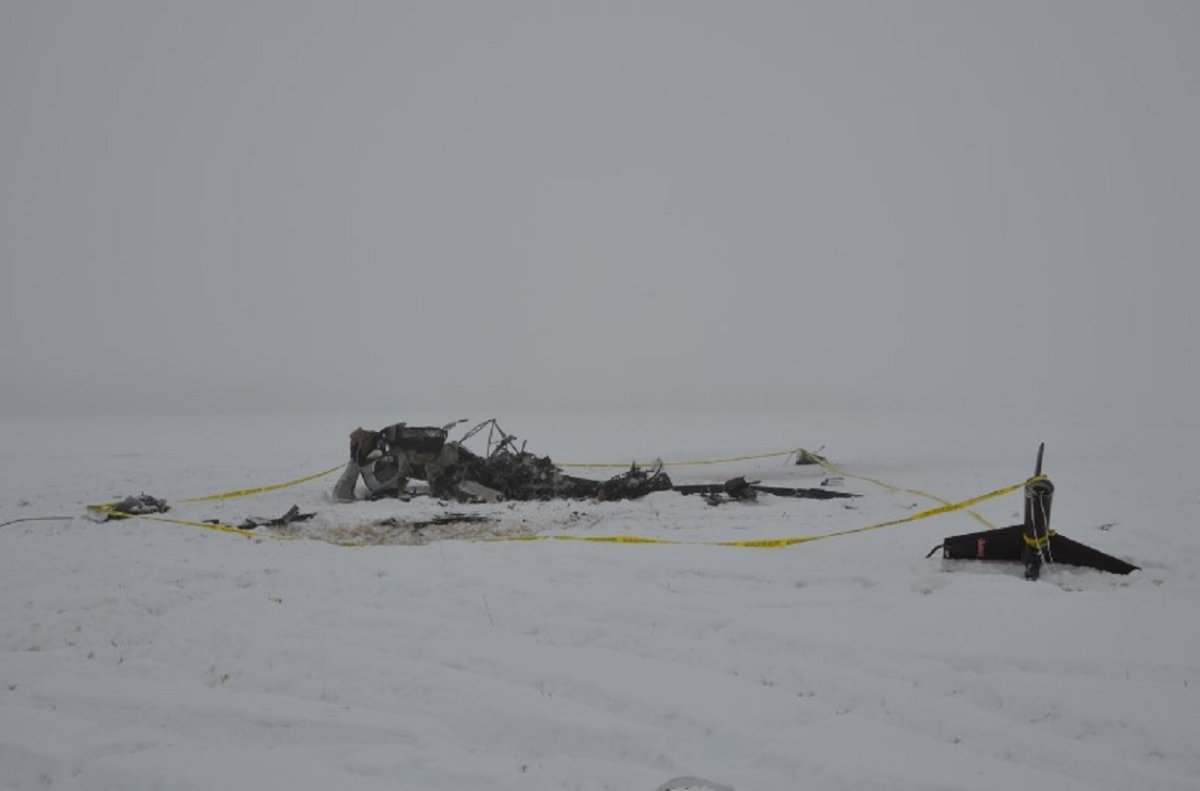An investigation into a deadly helicopter crash in northern Alberta last year has found the pilot’s decision making, deteriorating weather conditions and spatial disorientation led to the crash.

On Jan. 1, 2021, four people were killed when a privately registered Robinson R44 Raven II helicopter went down in a farmer’s field in the Birch Hills County area, northeast of Grande Prairie.
At the time, the RCMP said the four victims were all from one family. Police identified the father in the crash as Wade Balisky, and confirmed his wife and two daughters were the other victims.
An investigation into the cause of the crash was released by the Transportation Safety Board of Canada on Wednesday.
The agency said the helicopter took off from a farm near Eaglesham, Alta., on a night flight to DeBolt, Alta. Control of the helicopter was lost during the flight and it crashed, killing all four people on board.
The helicopter was destroyed and caught fire after the crash, according to the TSB.
The TSB said its investigation found that “an inaccurate assessment of the enroute weather led to the pilot’s decision to depart when the weather conditions for the intended flight were below the limits required for a night VFR (visual flight rules) flight.”
- Train goes up in flames while rolling through London, Ont. Here’s what we know
- Budget 2024 failed to spark ‘political reboot’ for Liberals, polling suggests
- Wrong remains sent to ‘exhausted’ Canadian family after death on Cuba vacation
- Peel police chief met Sri Lankan officer a court says ‘participated’ in torture
“It is likely that, shortly after departure, the pilot encountered deteriorating weather and poor visibility. As a result of the limited external visual cues, the pilot became spatially disoriented and lost control of the helicopter shortly before the collision with the ground,” the TSB said in its investigation report.
The TSB said if pilots do not access all available weather information, such as briefings from NAV Canada flight service specialists, there is an increased risk that they will fly into hazardous weather conditions.
The TSB said it has investigated seven other fatal private aircraft accidents on night VFR flights since 2013. Each time, the agency said it has highlighted the lack of clarity in the regulations regarding visual references.
In 2016, the TSB issued a recommendation for Transportation Canada to “clearly define the visual references required to reduce risks associated with night VFR flights.”




Comments